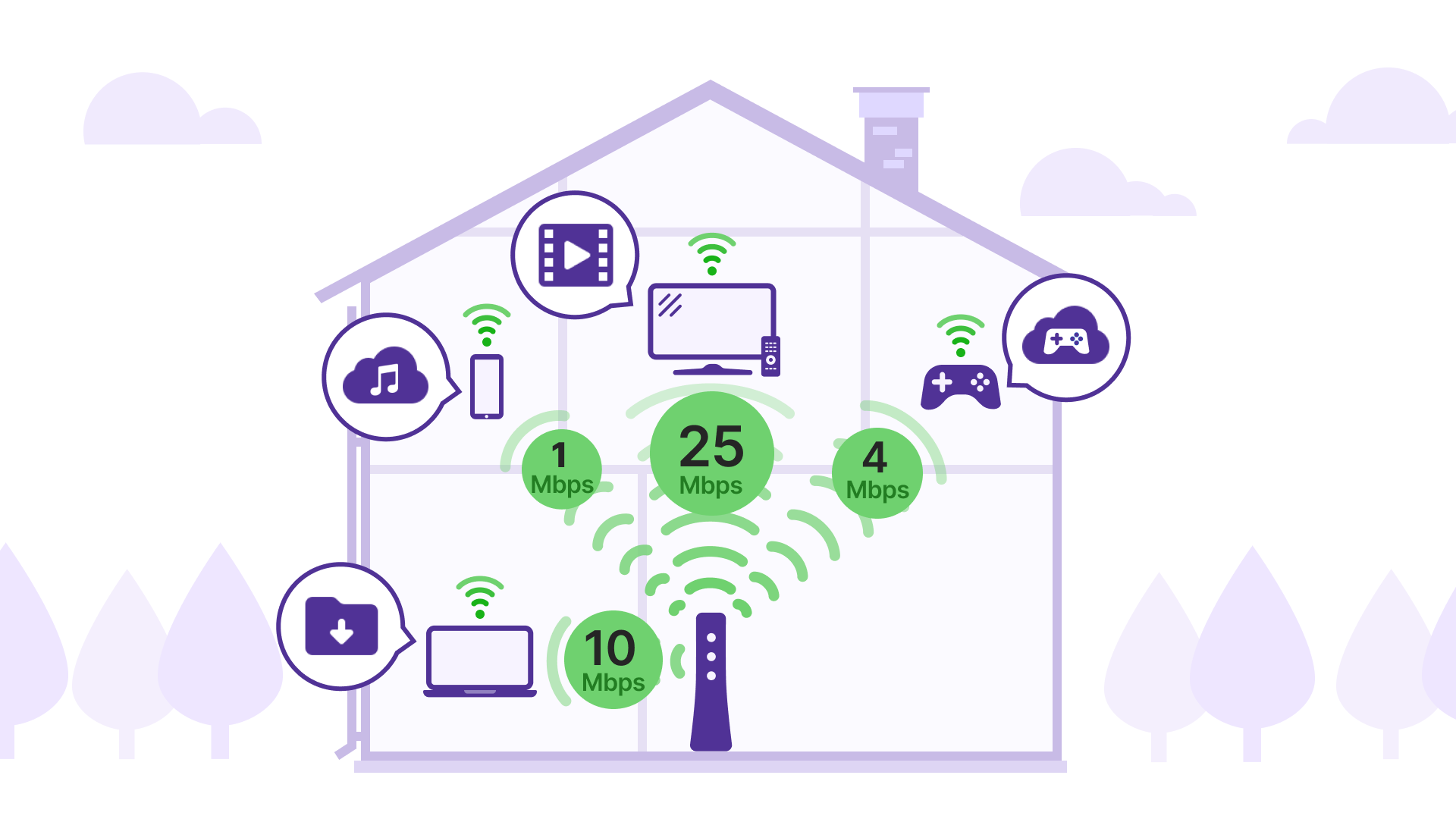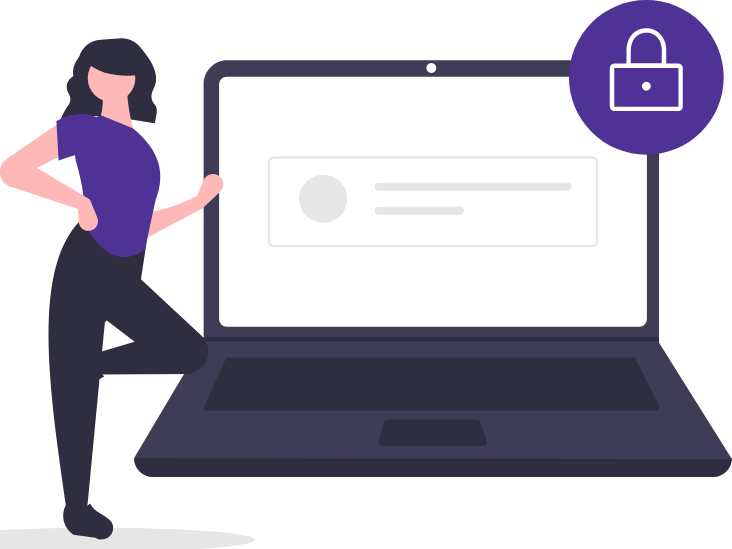What's the best internet speed for you?
These days it seems like no two households use the internet in the same way. So, if you’re considering new internet service, or a possible upgrade, you may well wonder what speed is best for you.
There are definitely some things to consider, such as the size of your household and what you like to do online. The good news is that for most people, any fiber internet speed plan—up to 500 Mbps or 940 Mbps—will provide enough bandwidth. Typically, the choice comes down to how many devices you plan to have connected at the same time. You can take our speed quiz to find out what your needs are, or keep reading below.
Minimum speed requirements
OK, let’s talk about speed. Understanding the recommended bandwidth for common online activities is a great way to determine what you need.
| Online activity | Bandwidth needed for 1-2 users | Bandwidth needed for 3-4 users |
|---|---|---|
Streaming music |
1 Mbps |
2 Mbps |
General web browsing, email, social media |
1.5 Mbps |
3 Mbps |
HD (High Definition) personal video chat (FaceTime, Zoom, etc) |
3 Mbps |
6 Mbps |
SD (Standard Definition) video streaming |
4 Mbps |
8 Mbps |
4 Mbps |
8 Mbps |
|
HD video streaming |
5-8 Mbps |
10-16 Mbps |
HD video teleconference |
6 Mbps |
12 Mbps |
Downloading large files |
10 Mbps |
20 Mbps |
Ultra HD 4K video streaming |
25 Mbps |
45 Mbps |
Remote work/learning |
25 Mbps |
45 Mbps |
Note: The numbers shown are the minimum download bandwidth required. Megabits per second (Mbps) is the standard measure of internet bandwidth and speed.
So, what’s the difference between “bandwidth” and “speed”? You may hear both of these words used as if they mean the same thing, but they are slightly different. Check out several speed-related articles on our blog (like Internet speeds explained) to learn more.
To figure out the best total bandwidth for your household, add up the bandwidth you’ll need for all your online activities happening at the same time on all your devices. Then count on a bit more to allow for any smart thermostats, smart alarm systems, or additional connected devices you may have that aren’t included in the table.
To further put it into perspective, check out these real-world examples.
Household 1
Number of people |
2 |
Online activities |
Remote work; Streaming music |
Minimum bandwidth requirement |
50 Mbps |
Household 2
Number of people |
5 |
Online activities |
Streaming video; Online shopping; Gaming; Remote learning; Remote work |
Minimum bandwidth requirement |
500 Mbps |
As you can see, even our lowest speed plan of up to 500 Mbps is enough to do so much. Imagine what’s possible with speeds up to 940 Mbps, or those ultra-fast “gig speed” plans, like speeds up to 3 Gbps*? The sky’s truly the limit! Learn more about gig speed.
* Limited availability, service and speed in select locations only.

Different bandwidth needs of connected devices
Source: Data from the Federal Communications Commission, 2022
The difference between download and upload speed
With fiber internet, not only do you get super-fast download speeds, but you can also achieve equally fast upload speeds. So what’s the difference?
Download speed (downstream bandwidth)
Download speed is the rate at which your connection (and your device) can send data from the internet to you. A higher download speed allows you to watch high-quality video with less buffering and download large files quickly.
Internet plans are usually given with the downstream bandwidth first and upstream bandwidth second. For example, a 100/10 Mbps connection would give you download bandwidth of 100 Mbps and upload bandwidth of 10 Mbps.
Upload speed (upstream bandwidth)
Upload speed refers to how quickly your device can send data to another device on the internet. Posting a photo or video on social media, for example, will make use of your upstream bandwidth.
Fiber internet makes it easier to get a "symmetrical" connection, meaning the downstream and upstream bandwidth are equally fast.
What is bandwidth?
Internet bandwidth is the total volume of data that can be delivered over a particular amount of time. Bandwidth, like speed, is expressed in “Megabits per second” (Mbps).
Though bandwidth and speed aren't the same thing, they are closely related, and many people use the two terms interchangeably. The higher the bandwidth of service, the greater volume of information can pass through your connection, which also means you’ll see faster speeds across your devices.
Now that you understand more about bandwidth and speed you should be able to decide what internet speed you need for your own household or business. You can explore fiber internet plans to see if you’re getting the service that’s right for you.
This content is provided for informational purposes only and may require additional research and substantiation by the end user. In addition, the information is provided “as is” without any warranty or condition of any kind, either express or implied. Use of this information is at the end user’s own risk. All third-party company and product or service names referenced in this article are for identification purposes only and do not imply endorsement or affiliation with Quantum Fiber. This document represents Quantum Fiber’s products and offerings as of the date of issue. Services not available everywhere. Quantum Fiber may change or cancel products and services or substitute similar products and services at its sole discretion without notice. ©2024 Q Fiber, LLC. All Rights Reserved. Quantum, Quantum Fiber and Quantum Fiber Internet are trademarks of Quantum Wireless LLC and used under license to Q Fiber, LLC.
Was this information helpful?








